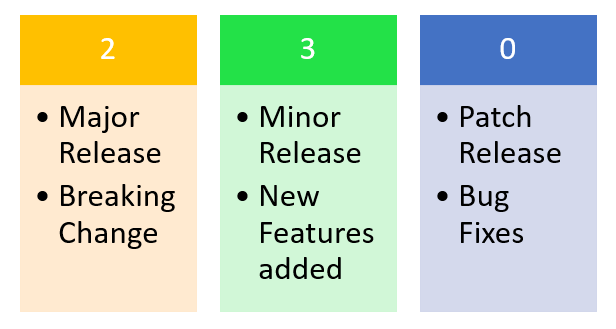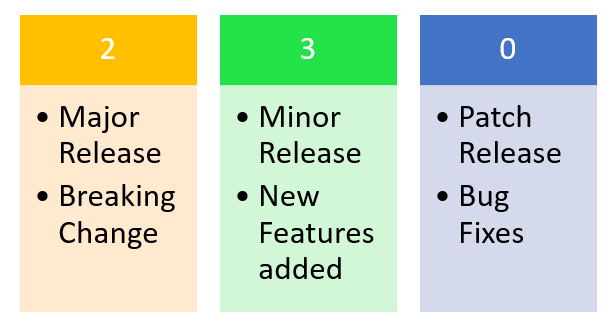Major Releases: The Key to Evolution in Software Development
In the world of software development, releases play a critical role in shaping the user experience and ensuring the continued growth and success of an application. Among the different types of releases, the major release stands out as one of the most significant. These releases often represent significant updates, new features, or improvements that set the stage for the future direction of the product.
In this article, we’ll dive into what a major release is, what it typically involves, why it’s important, and how development teams can prepare for one. We will also examine the key differences between major and minor releases and discuss some best practices for managing major software updates.
What is a Major Release?
A major release refers to a new version of a software application or system that introduces significant changes compared to previous versions. These changes can include:
- New features or functionalities
- Major enhancements to existing features
- Redesigns or overhauls of the user interface (UI) or user experience (UX)
- Architecture or infrastructure changes
- Increased scalability or performance improvements
- Breaking changes that might require modifications to existing code or systems
- Removal of deprecated features
In software versioning, major releases are typically denoted by an increment in the first number of the version (e.g., from version 1.x to 2.x, or 3.0 to 4.0). These releases often come after a period of development and refinement of smaller updates (minor releases, patches, or hotfixes) and are aimed at offering users a new set of capabilities or improvements that justify a substantial version change.
Example of Major Release Versioning:
- Version 1.0 → Version 2.0 (major release)
- Version 2.0 → Version 3.0 (major release)
Each increment signals a step forward, introducing substantial new functionality, improvements, or changes to the product that might affect user experience, workflows, or underlying code dependencies.
What Does a Major Release Typically Include?
A major release is not just another routine software update; it often marks a turning point in the software’s development lifecycle. Here’s a look at the key components typically found in a major release:
1. New Features or Functionalities
Major releases often introduce new features or tools that significantly enhance the software’s capabilities. These might be features users have been eagerly waiting for or entirely new tools that expand the software’s use cases. For example, a photo-editing app might introduce advanced AI-driven filters, or an e-commerce platform might add a new recommendation engine.
2. User Interface (UI) and User Experience (UX) Overhaul
In many cases, a major release includes an overhaul or redesign of the user interface (UI) and user experience (UX). A fresh UI design can improve usability and aesthetics, while changes to UX can streamline workflows or enhance accessibility. A major release can also include enhancements to improve how users interact with the software, such as introducing new navigation patterns or reducing clicks required to accomplish tasks.
3. Performance Improvements
A major release often comes with performance optimizations, whether it’s improving the speed of the application, reducing memory usage, or optimizing the backend infrastructure. For example, an app might start supporting real-time synchronization, improve response times, or integrate new technologies for scalability.
4. New Platforms or Integration Support
Major releases may add support for new platforms, operating systems, or devices. For instance, a mobile app might extend its support from just Android to also include iOS, or a cloud service may expand its integration capabilities with third-party tools and platforms.
5. API Changes
A major release may involve changes to an application’s API (application programming interface), which could affect existing integrations. These API changes are typically backward incompatible, meaning users or developers using the previous API version may need to adjust their code to be compatible with the new version.
6. Deprecation of Older Features
In some cases, older or obsolete features are removed or deprecated in a major release. Deprecating features involves marking them as outdated and recommending alternatives, while removing features eliminates them entirely. Although this can cause disruptions for some users, it helps the development team refocus on more important features and capabilities.

7. Security Enhancements
Security is always a priority in software development. Major releases often include significant security improvements, such as addressing vulnerabilities, adding encryption, improving authentication mechanisms, or enforcing stronger security policies. These changes may be necessary to protect against emerging security threats.
8. Database or Backend Changes
Major releases can also include changes to the underlying database structure or backend architecture. This can involve schema changes, migrations, or transitioning to a more efficient database or storage solution. These changes are often required to handle more data, support new features, or improve system scalability.
9. Bug Fixes and Stability Enhancements
While major releases are often associated with new features, they also address critical bug fixes and stability improvements. These fixes often target long-standing issues or bugs that could severely impact the user experience.
Why Are Major Releases Important?
Major releases are crucial to the evolution of any software product, and they serve several important purposes:
1. Attracting New Users and Retaining Existing Ones
Major releases create a buzz in the software community. Whether it’s a major new feature or a complete overhaul, these updates capture the attention of users, both existing and potential. The excitement around new capabilities can drive new user adoption, and the improvements to usability and performance can help retain existing users.
2. Meeting Market Demands
As the market evolves, so do user expectations. A major release is often the way to respond to changing market needs, address user feedback, and incorporate new trends. For example, a new version of a software product might include cloud support, mobile compatibility, or AI-powered features to meet market demands.
3. Repositioning the Product
Sometimes, a major release is part of a broader strategic shift or rebranding effort. Companies might use a major release to reposition their product or alter its target market. This could be an effort to pivot to a new business model, enter a new industry, or offer more competitive features.
4. Technical Debt Reduction
Major releases can also be used as an opportunity to tackle technical debt—the accumulated cost of shortcuts, outdated code, and inefficient systems. During a major release, developers can refactor code, rewrite modules, or change underlying architectures to improve long-term maintainability.
5. Compatibility and Future-proofing
With technology evolving rapidly, major releases often ensure that the software stays compatible with new operating systems, devices, or frameworks. A well-timed major release can future-proof a product for years to come, while also ensuring compatibility with third-party integrations and services.
Major Release vs. Minor Release
It’s important to distinguish between a major release and a minor release. While both types of releases bring updates to a product, they differ in the scale and nature of the changes they include.
- Major Release (X.0): Introduces significant, often breaking changes that may require modifications to existing workflows or integrations. Major releases typically include new features, architectural overhauls, or backward-incompatible changes.
- Minor Release (X.Y): Focuses on smaller, less disruptive updates, such as bug fixes, security patches, and minor feature enhancements. Minor releases are usually backward-compatible and don’t require major changes to user workflows.
For example, an application might move from version 2.0 (major release) to version 2.1 (minor release), where 2.1 would typically include smaller improvements or bug fixes rather than a complete overhaul of the software.
How to Prepare for a Major Release
A successful major release requires meticulous planning and coordination across development, quality assurance, marketing, and support teams. Here are some key steps for preparing for a major release:
1. Planning and Roadmap
Develop a comprehensive release roadmap that outlines the features and goals for the major release. This roadmap should clearly define timelines, milestones, and any critical dependencies.
2. Development and Testing
The development phase for a major release is often lengthy and requires extensive testing. This involves unit testing, integration testing, user acceptance testing (UAT), and stress testing to ensure the release works as intended. Early testing helps catch issues before they affect users.
3. User Communication
Clear communication with users is vital. Announce the upcoming release through newsletters, blog posts, and social media. For existing users, provide documentation on new features, changes, and any potential migration requirements.
4. Training and Support
Ensure that support teams are ready to handle any inquiries related to the major release. Additionally, if the release includes significant changes, consider offering training resources or tutorials to help users adapt.
5. Monitoring and Post-release Support
Once the release is live, monitor the application for performance issues, errors, or user complaints. Post-release support is critical to ensure any issues are resolved quickly, and users have a positive experience.
Conclusion
A major release is a pivotal moment in the lifecycle of any software product. It represents not only new features and improvements but also strategic decisions about the product’s direction, user base, and market positioning. Whether it’s introducing new capabilities, addressing long-standing technical debt, or responding to customer demands, major releases drive innovation and ensure that software continues to evolve in a competitive market.
For software teams, managing a major release requires careful planning, thorough testing, and effective communication with users. When done right, major releases can transform products, delight users, and ensure long-term success.

